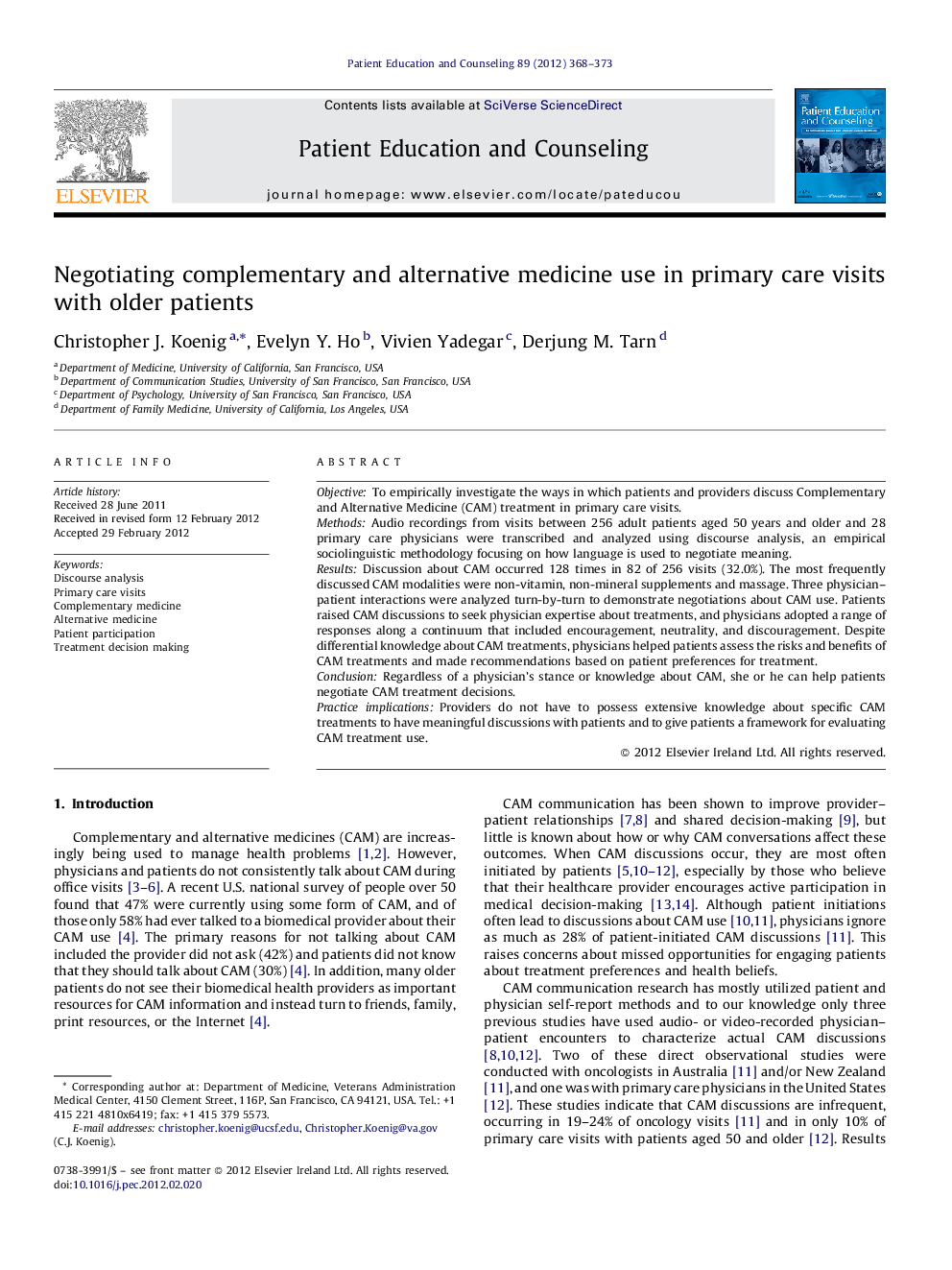| Article ID | Journal | Published Year | Pages | File Type |
|---|---|---|---|---|
| 3814250 | Patient Education and Counseling | 2012 | 6 Pages |
ObjectiveTo empirically investigate the ways in which patients and providers discuss Complementary and Alternative Medicine (CAM) treatment in primary care visits.MethodsAudio recordings from visits between 256 adult patients aged 50 years and older and 28 primary care physicians were transcribed and analyzed using discourse analysis, an empirical sociolinguistic methodology focusing on how language is used to negotiate meaning.ResultsDiscussion about CAM occurred 128 times in 82 of 256 visits (32.0%). The most frequently discussed CAM modalities were non-vitamin, non-mineral supplements and massage. Three physician–patient interactions were analyzed turn-by-turn to demonstrate negotiations about CAM use. Patients raised CAM discussions to seek physician expertise about treatments, and physicians adopted a range of responses along a continuum that included encouragement, neutrality, and discouragement. Despite differential knowledge about CAM treatments, physicians helped patients assess the risks and benefits of CAM treatments and made recommendations based on patient preferences for treatment.ConclusionRegardless of a physician's stance or knowledge about CAM, she or he can help patients negotiate CAM treatment decisions.Practice implicationsProviders do not have to possess extensive knowledge about specific CAM treatments to have meaningful discussions with patients and to give patients a framework for evaluating CAM treatment use.
